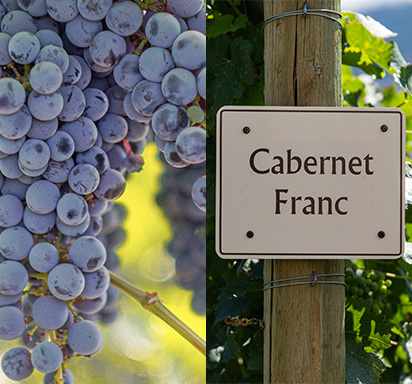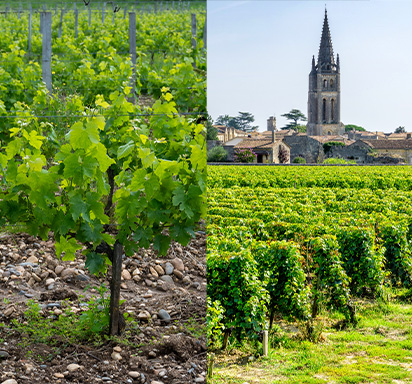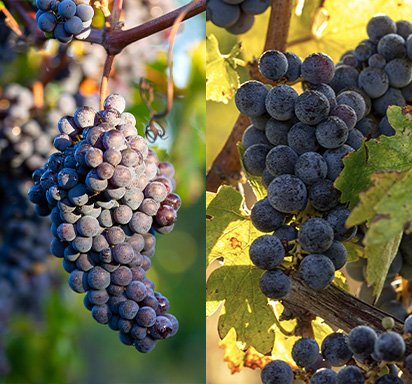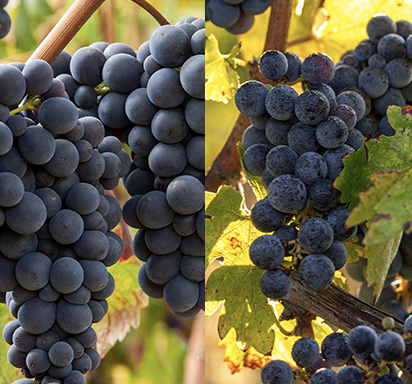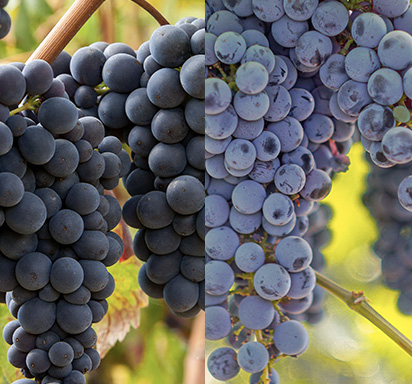Malbec vs. Cabernet Sauvignon: Differences, Origins & Best Wines
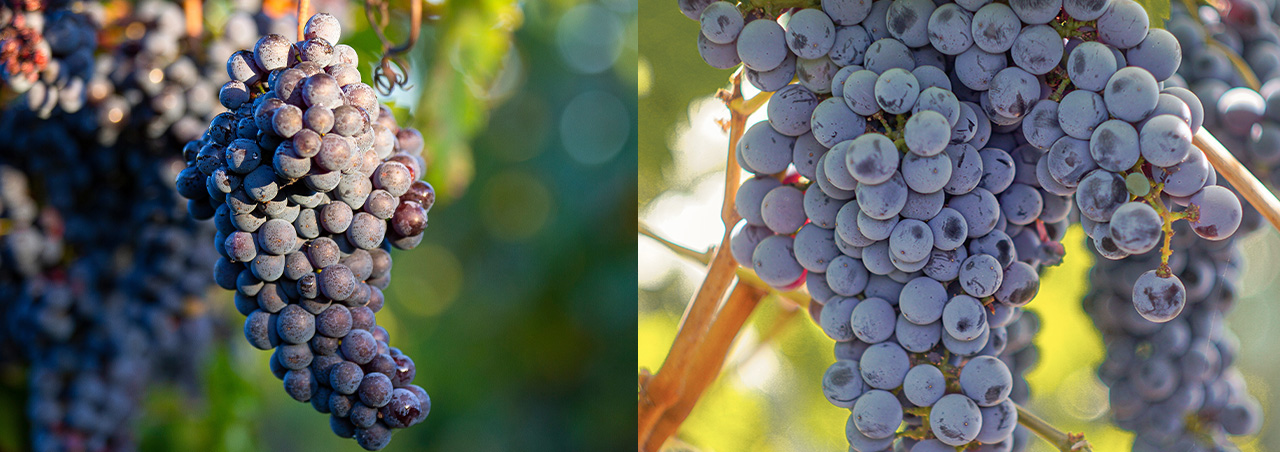
Explore the key differences between Malbec and Cabernet Sauvignon — from origins and taste profiles to food pairings and top producers — to discover which red wine suits your style best.
Which red wine is better for you? Malbec or Cabernet Sauvignon? In this guide, we’ll compare their origins, flavor profiles, growing regions, and iconic producers to help you decide. Whether you're new to wine or a seasoned enthusiast, understanding these two powerhouse varieties will deepen your appreciation — and guide your next pour.
Malbec vs. Cabernet Sauvignon: Origins and History
Malbec originated in southwest France, specifically in the Cahors region, where it was traditionally known as “Côt.” Though once part of Bordeaux blends, its sensitivity to disease led to a decline in use there. However, you can still find a small percentage of Malbec in Bordeaux blends today. The red grape gained a new life in Argentina, where the high-altitude vineyards of Mendoza provided the perfect growing conditions. Today, Argentina is considered Malbec’s spiritual home.
Cabernet Sauvignon, by contrast, is a Bordeaux native. The result of a natural cross between Cabernet Franc and Sauvignon Blanc, it gained fame for producing age-worthy, structured wines. Its versatility has made it one of the most widely planted red grape variety in the world, with major acclaim in regions such as Napa Valley, Maipo Valley, and Coonawarra.
Top Wine Regions for Malbec and Cabernet Sauvignon
Where Is Malbec Grown?
Malbec is most famously grown in Argentina, particularly in the Mendoza region, which includes sub-regions like the Uco Valley and Luján de Cuyo. These high-altitude areas provide ideal conditions for producing rich, expressive Malbec wines.
In France, Malbec originates from Cahors, where it is traditionally more rustic and tannic. While it has declined in prominence in Bordeaux, small percentages are still used in some blends.
Beyond these two key regions, Malbec is also cultivated in Chile, South Africa, and parts of the United States, particularly in California and the Pacific Northwest.
Where Is Cabernet Sauvignon Grown?
Cabernet Sauvignon originates in France, where it plays a leading role in Left Bank Bordeaux blends, particularly in appellations like Pauillac, Margaux, and Saint-Estèphe.
In the United States, Napa Valley in California is the most iconic region for Cabernet Sauvignon, with Washington State also producing highly regarded examples.
Chile’s Maipo Valley has become a rising star for structured, elegant Cabernet, while Australia’s Coonawarra and Margaret River regions are known for their distinct expressions of the red grape.
In Italy, Cabernet Sauvignon features prominently in Super Tuscan blends, adding depth and structure to traditional Sangiovese-based wines.
Malbec thrives in dry, high-elevation climates, while Cabernet Sauvignon excels in sunny, warm regions with well-draining soils.
Flavor Profile: What do Malbec and Cabernet Sauvignon Taste Like?
Malbec wines from Argentina & France, what are the differences?
Malbec typically offers juicy, ripe fruit flavors like plum, blackberry, and black cherry. It’s medium to full-bodied with soft tannins and a smooth mouthfeel. Depending on its origin, you may also taste notes of cocoa, violet, tobacco, or leather. Argentine Malbecs are fruit-forward and lush, while French versions are more rustic and structured.
Cabernet Sauvignon: Power, Structure & Cellaring Potential
Cabernet Sauvignon is known for its bold structure, high tannins, and deep complexity. Expect flavors of blackcurrant (cassis), black cherry, and dark plum, alongside earthy and savory elements such as cedar, tobacco, bell pepper, and graphite. It’s full-bodied and often oak-aged, making it suitable for long-term cellaring.
Malbec and Cabernet Sauvignon: What are the differences and similarities?
While both are dry red wines with bold flavors and high popularity, their key differences lie in:
Tannin levels: Cabernet Sauvignon typically has firmer, more pronounced tannins compared to Malbec.
Aging potential: Cabernet Sauvignon generally ages longer and develops more complexity over time.
Acidity and complexity: Cabernet tends to be more structured, with higher acidity and layered complexity.
Drinkability: Malbecs are often more approachable and enjoyable at a younger age than Cabernet Sauvignon.
Their similarities include:
Both pair well with red meats and hearty dishes.
Both express regional terroir vividly.
Both have global recognition and are grown in top wine-producing countries.
Food and Wine Pairing: Malbec vs. Cabernet Sauvignon
When it comes to pairing food, both Malbec and Cabernet Sauvignon shine with rich, hearty dishes, but their distinct profiles lend themselves to different culinary matches.
Malbec pairs beautifully with grilled meats like steak, lamb, and sausages thanks to its juicy fruit flavors and soft tannins. It also complements smoky barbecue, roasted vegetables, and dishes with earthy spices or a touch of sweetness, such as mole or spiced chili. Malbec’s approachable style makes it a versatile partner for casual gatherings and comfort food.
Cabernet Sauvignon, with its firm tannins and bold structure, pairs best with fattier cuts of meat like ribeye, brisket, or prime rib, which balance its intensity. It also enhances dishes with rich sauces — think peppercorn, mushroom, or red wine reductions. Strong cheeses, such as aged cheddar or blue cheese, also complement Cabernet’s complexity. This wine is ideal for formal dinners and occasions where a robust, age-worthy wine is desired.
Famous Producers of Malbec and Cabernet Sauvignon
Top Malbec Wineries
Catena Zapata (Argentina): A pioneer in high-altitude winemaking and premium Malbec.
Zuccardi (Argentina): A leader in high-altitude winemaking, Zuccardi crafts premium, terroir-driven Malbecs that showcase the best of the Andes.
Top Cabernet Sauvignon Wineries
Château Margaux and Château Latour (France): Legendary Bordeaux estates producing world-class Cabernet blends.
Robert Mondavi and Caymus Vineyards (USA): Napa Valley icons known for powerful, collectible Cabernets.
Penfolds (Australia): Producers of the iconic Bin 707, a benchmark for Australian Cabernet Sauvignon.
Malbec or Cabernet Sauvignon: Which Should You Choose?
If you prefer fruit-forward, smooth, and easy-drinking wines, Malbec is your best bet. It’s approachable and great for casual dinners or barbecues. If you want something more structured, age-worthy, and layered, go for Cabernet Sauvignon — perfect for wine cellars and more formal occasions.
Conclusion: Malbec vs. Cabernet Sauvignon in a Glass
Whether you're exploring Malbec's bold plum flavors or savoring the complex structure of Cabernet Sauvignon, both wines offer distinct and exciting experiences. Let your palate — and your occasion — guide your choice.
You may like
Explore the key differences between Cabernet Sauvignon and Cabernet Franc—from origins and flavor profiles to winemaking roles—so you can better choose and enjoy these iconic red grapes.
6/11/2025The exceptional concentration of top-tier wineries and renowned appellations has long made Bordeaux a place of longing for fine wine enthusiasts and discerning hedonists around the world.
4/18/2025Malbec and Merlot are two beloved red wines, each with unique flavors, tannins,& origins. Malbec offers bold, dark fruit flavors with spice, while Merlot is smoother & more approachable. Learn their differences and food pairings.
4/1/2025Chardonnay and Pinot Grigio are two beloved white wines with distinct flavors. Explore their origins, flavor profiles, body, food pairings, and more to find out which wine suits your taste and occasion best.
3/27/2025Pinot Noir and Merlot are two beloved red wines with distinct flavors, aging potential, and food pairings. Discover their key differences to help you choose the perfect bottle for any occasion.
3/5/2025Pinot Noir vs. Cabernet Sauvignon—two iconic red wines with distinct flavors, body, and food pairings. Learn about their origins, characteristics, and how to choose the perfect bottle for any occasion in this in-depth guide.
3/4/2025


















